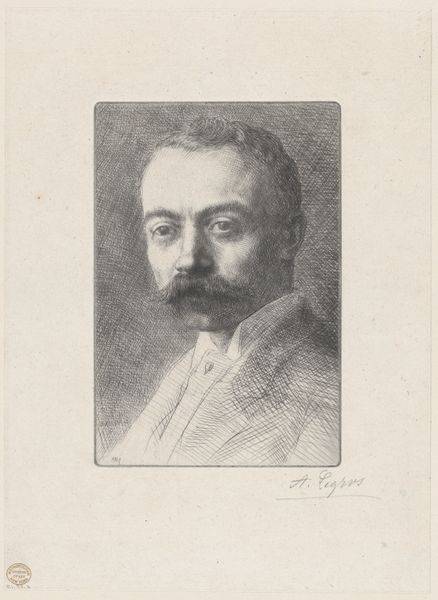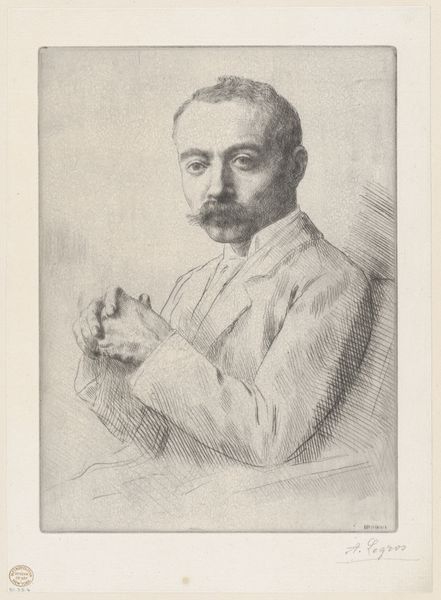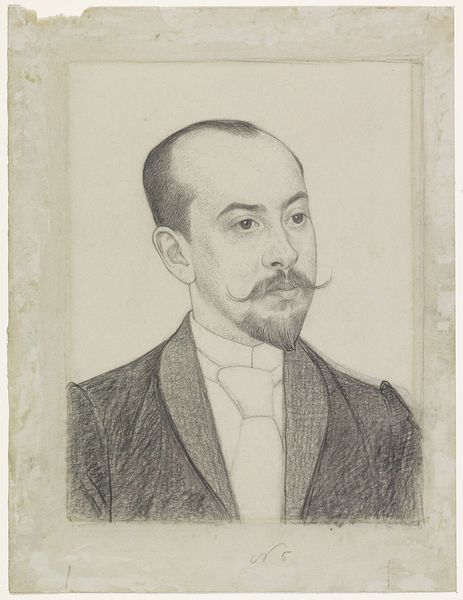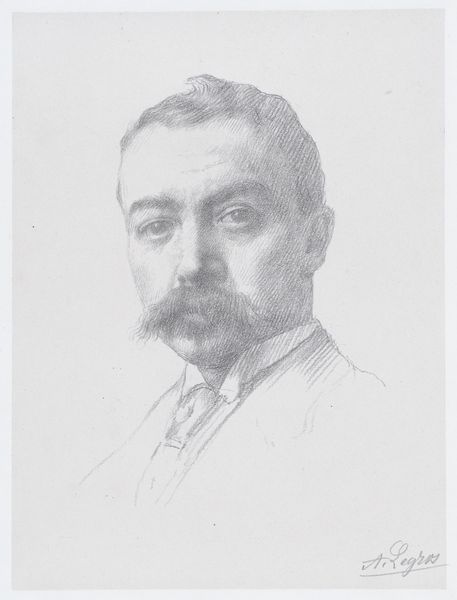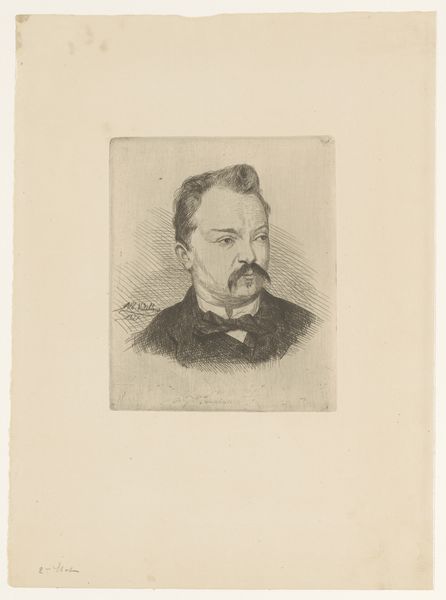
drawing, print
#
portrait
#
pencil drawn
#
drawing
#
light pencil work
# print
#
pencil sketch
#
old engraving style
#
charcoal drawing
#
portrait reference
#
pencil drawing
#
limited contrast and shading
#
men
#
portrait drawing
#
pencil work
Dimensions: Sheet: 11 7/8 × 8 11/16 in. (30.2 × 22 cm) Plate: 7 7/16 × 5 1/16 in. (18.9 × 12.8 cm)
Copyright: Public Domain
Editor: Here we have Alphonse Legros's "Portrait Head of Edward D. Adams," created in 1892. It’s a print, giving it a delicate, almost ephemeral quality. I’m struck by the intensity of the gaze... it feels both direct and somewhat melancholic. How do you interpret this work? Curator: I see this portrait as a fascinating document of its time, a snapshot of the elite and their social circles. Adams, as a prominent figure, chose to have his likeness rendered in this almost understated manner. But it also makes me think about representation itself. Who gets to be portrayed, and how? Editor: That's interesting. What do you mean? Curator: Consider the power dynamics at play. Legros, the artist, is granted a certain level of authority in how Adams is presented, but Adams also has agency in choosing Legros. How do you see that relationship reflected in the portrait itself? Editor: Well, there’s a certain formality, but also a vulnerability, in Adams's expression. Do you think that reveals something about the artistic circles of the time? Curator: Precisely! This portrait pushes against the traditional power structures embedded in portraiture. Legros’s soft lines seem to humanize Adams, moving away from grandiose depictions of power. It encourages us to look beyond mere representation and consider the underlying narrative of class, privilege, and artistic expression. It subtly undermines expectations of masculinity too, perhaps? Editor: That makes me see it in a totally new light. Curator: Exactly. Art provides ways for us to understand and deconstruct complex issues, like how wealth and status have been presented to the public over time. Editor: This has been really helpful—thank you! I see now how this portrait can open up wider questions about representation and social dynamics in the 19th century.
Comments
No comments
Be the first to comment and join the conversation on the ultimate creative platform.
